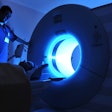The cost of cancer screening in the U.S. has topped more than $40 billion, with mammography and cervical cancer screenings accounting for the largest total number of tests. Our coverage of a study that explored cancer screening metrics was our most highly viewed article on AuntMinnie.com this week.
Our second most clicked story reported on how AI-generated images of physicians are disproportionately white and male, prompting Harvard investigators to urge research focused on enhancing training dataset diversity and creating algorithms capable of generating more representative images.
In the third spot for the week was our interview with Judy Yee, MD, of Montefiore Medical Center in New York, in which she addressed the question of whether Medicare coverage of CT colonography will boost its utilization. An article on research that describes ultrasound's ability to detect more breast cancers in women with dense tissue took fourth place on our reader list, while a story on how imaging for pediatric appendicitis is shifting from CT to ultrasound took fifth.
We continue to take nominations for the 2024 Minnies, our annual award program recognizing excellence in radiology. This year we're requiring all submissions to include justification for why the nominee deserves to win a Minnies award. There are 15 categories, including Most Influential Radiology Researcher, Best New Radiology Vendor, Scientific Paper of the Year, and more.
Click here to enter your Minnies picks. After the nomination period ends at the end of this month, we’ll announce our semifinalists in early September.
When you've made your nominations, check out the full list of our top stories of the week:
- Cancer screening in the U.S. costs $43.2B annually
- 'AI, what does a doctor look like?'
- Will Medicare coverage boost utilization of CT colonography?
- Ultrasound detects more cancers in high-risk women with dense breasts
- More ultrasound use translates to less CT for pediatric appendicitis
- 3D printing increases user confidence, saves on procedure times
- CT, MRI enterography show promise for assessing Crohn's disease
- Sirtex Medical introduces new Y-90 delivery method
- Do PCPs trust the AI that flags opportunistic CT imaging results?
- 3 principles for making radiology 'culturally dexterous'
- The PACSman Pontificates: How can AI save itself?
- PET tracer performs well in prostate cancer trial
- Cryoneurolysis effective for pain control after rib fractures
- CT imaging markers flag diabetes, cardiometabolic disease risk



















